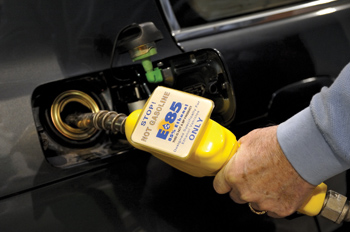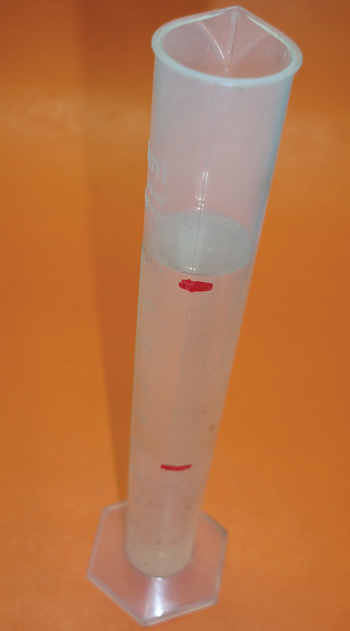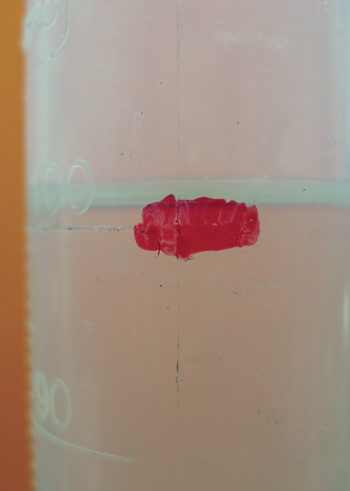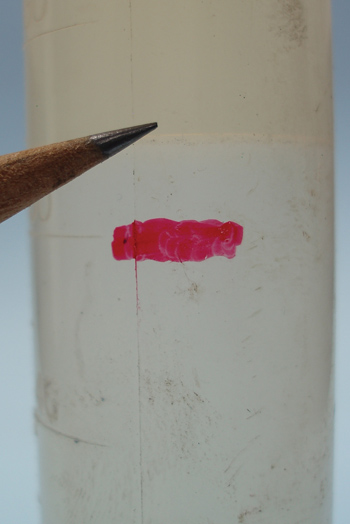
Although cases involving contaminated gasoline are relatively rare nowadays, they still occur. In many cases, the technician has replaced the fuel pump or mass air flow (MAF) sensor to address a P0171/P0174 “lean-condition” DTC with no result. In all likelihood, the technician didn’t consider the possibility that the vehicle’s fuel might be contaminated with E85 gasoline, diesel fuel, stale gasoline, or, to a lesser degree, sugar and water. The fact is that the first three fuel contaminants tend to lean out the air/fuel mixtures, while sugar and water generally cause intermittent cranking, no-start and stalling complaints.
In total, and depending upon the percentage present in the fuel tank, contaminated fuel can mimic the symptoms produced by defective fuel pumps, fuel injectors and fuel control components like MAF sensors.
BASIC CHEMISTRY
Because organic chemistry is the study of incredibly complex fossil-fuel hydrocarbon compounds left behind by living things, I will likely simplify to the point of error in the following text. Nevertheless, as the name implies, hydrocarbon fuels like gasoline are composed of hydrogen and carbon atoms generally obtained by refining animal-based fossil fuels like crude oil. Oxygenated hydrocarbon fuels like ethanol and methanol include oxygen atoms in their chemical make-up and are obtained by fermenting a plant-based biomass.
Since oxygenated fuels contain part of the oxygen needed for combustion, oxygenated fuels require less atmospheric oxygen to create a “stoichiometric” air/fuel ratio than does pure gasoline.
During our discussion of the various fuels, I’ll use the term “stoichiometric” to indicate when all of the oxygen and hydrocarbons contained in an engine’s cylinders are completely consumed during combustion. We’ll also look at differences in specific gravity, heat output in British Thermal Units (BTUs) and octane rating. Specific gravity simply compares the weight of a fluid to the weight of an equal volume of water at room temperature. Since hydrocarbon fuels are lighter than water, their specific gravities will be less than “one.”
BTUs are a comparative measure of heat produced by equal weights of hydrocarbons when combined with oxygen. Octane ratings are the tendencies of various hydrocarbons to self-ignite when mixed with a stoichiometric volume of air and compressed in a closed cylinder. Octane ratings are important because gasoline engines require a fuel that will not self-ignite under extreme levels of compression.
In direct contrast, diesel engines require a fuel that will self-ignite under the same compression extremes. Consequently, the Research Octane Number (RON) of some diesel fuels is about 25, whereas the RON of most regular-grade gasoline sold in the U.S. ranges around 87 RON. Last, but not least, the lack of fuel volatility (Reid Vapor Pressure) becomes an important consideration when diagnosing fuel contamination issues at freezing or sub-freezing operating temperatures.
Major symptoms of contaminated fuel can include cranking no-start, hard starting, stalling, loss of power and poor fuel economy. Because symptoms of fuel contamination generally appear immediately after refueling, the fuel gauge needle pegged on full should always be a diagnostic “red flag.” And, because some drivers simply add fuel rather than topping off their tanks, it’s doubly important to ask if the vehicle has recently been refueled. With those precautions in mind, let’s look at some of the symptoms associated with the following fuel contaminants.
E85 GASOLINE
Although it’s hard to think of E85 gasoline as a fuel contaminant, it’s important to remember that E85 is designed for use only in flex-fuel vehicles. Because pure ethanol requires approximately 150% more volume to support stoichiometric combustion than does pure gasoline, some early flex-fuel vehicles use an ethanol sensor in the fuel line to estimate the volume of ethanol in the fuel.
Later flex-fuel vehicles simply use data inputs from their air/fuel ratio sensors to adjust fuel injector pulse width to accommodate increased volumes of ethanol. Most flex-fuel vehicles can be identified by an exterior flex-fuel emblem and, in many cases, a yellow gas cap.
Many motorists inadvertently top off their fuel with E85 because they are unaware that E85 gas pump nozzles are generally equipped with yellow covers. Immediately afterward, they begin experiencing lean-fuel driveability symptoms such as hard starting and loss of power accompanied by a P0171 or P0174 DTC, depending upon the application. At this point, let’s note that “ethanol” and “methanol” are distinctly different alcohol compounds. Methanol is used in racing applications because its high latent heat of vaporization keeps the engine cool, and because it produces slightly more horsepower than gasoline. But, even with those advantages, methanol has a major tendency to corrode metal surfaces and degrade fuel hoses, O-rings and other soft fuel system components.
DIESEL FUEL
Because the specific gravity or density of diesel fuel (0.825) is higher than gasoline (0.787), it contains about 15% more heat energy. Diesel fuel also contains wax-like paraffins that tend to “gel” in sub-freezing ambient temperatures and clog the engine’s fuel filters. And, since winter-blended diesel fuels flow much better at low ambient operating temperatures, their effects as a fuel contaminant might vary at sub-zero temperatures. Another diagnostic issue with higher-density diesel fuel is that it doesn’t flow well through low-pressure fuel injectors found on gasoline engines.
The symptoms of diesel contamination depend greatly upon the percentage present in the tank. A lower percentage might result in a minor power loss while, thanks to a lack of volatility, a greater percentage might result in a cranking, no-start condition after an overnight cold-soak. One basic test for diesel fuel is to place a few sample drops of gasoline on your fingertips and rub them together. If an oily residue is left, suspect diesel fuel contamination. If the cranking, no-start vehicle has fuel pressure, but acts as if it has a fuel delivery problem, try adding a substitute fuel like propane to the air intake. If the cylinders begin to fire, again suspect diesel fuel contamination.
STALE GASOLINE
The symptoms of stale gasoline are caused by a loss of volatility, which means that the gasoline has lost its “light-end” components and will, therefore, not vaporize well enough to support ignition. Case in point, I was called to diagnose a vehicle with a poor cold starting and cold engine performance complaint. The symptoms would vary according to ambient temperature. The diagnostic “red flag” was a fuel gauge needle pegged on “full.”
Draining the tank and installing five gallons of fresh gasoline resolved the complaint. Afterward, I discovered that the driver had filled his tank from an above-ground tank containing gasoline that was 1-1/2 years old. Exposure to extreme day/night temperature changes had long ago driven most of the highly volatile, “light-end” hydrocarbon components of the fuel into the atmosphere.
SUGAR & WATER CONTAMINATION
While many myths continue to circulate about how sugar in fuel tanks will ruin an engine, keep in mind that sugar will not dissolve in pure gasoline. It can, however, dissolve in trace amounts of water created by normal fuel tank condensation. Case in point, a high school teacher had his Isuzu Rodeo towed in for a cranking, no-start complaint. According to the teacher, his Rodeo had progressively run worse during the previous two weeks. It didn’t take long to discover that no fuel was flowing through the throttle body injectors. Removing the fuel tank revealed that the bottom of the tank was coated with a thick, cola-type syrup. Evidently, a disgruntled student had poured a sugar-based cola drink into the fuel tank, and from there it gradually migrated to the fuel injectors and stuck the fuel injector pintle valves closed.
Although water contamination is rare, it can result from something as simple as using an old, rusty gas can to refuel a vehicle. In any case, small percentages of water will be absorbed by ethanol gasoline, while large percentages can absorbed by using an isopropyl alcohol additive. Greater percentages of water will quickly settle to the bottom of the tank or in-line fuel filter, where the fuel pump can pick up a few drops, causing an intermittent stalling or cranking, no-start complaint.
Draining the contents of the in-line fuel filter is perhaps the quickest way of confirming water contamination. Testing on single-line fuel systems with no Schrader port or in-line fuel filter can be difficult. Here again, the best test procedure is to try starting the engine on a substitute fuel source like propane. If the vehicle starts, it most likely has a fuel contamination problem.
A Simple Ethanol Test







